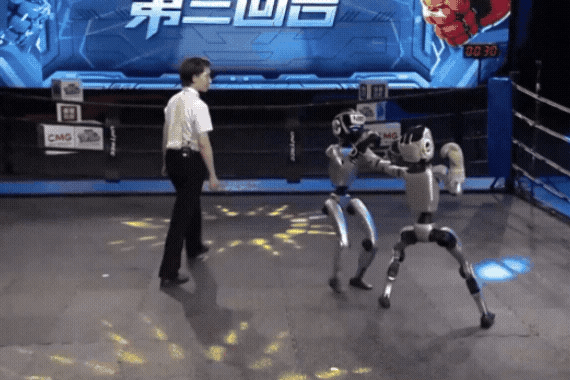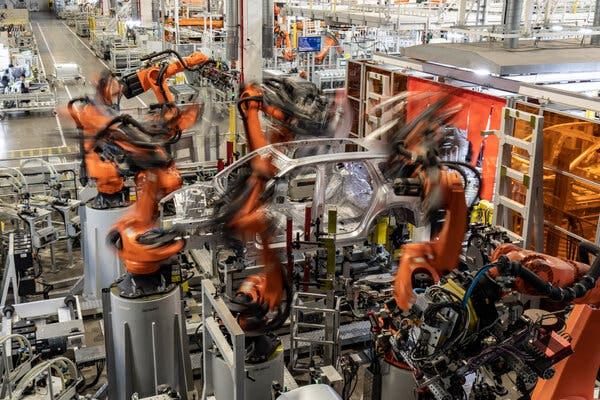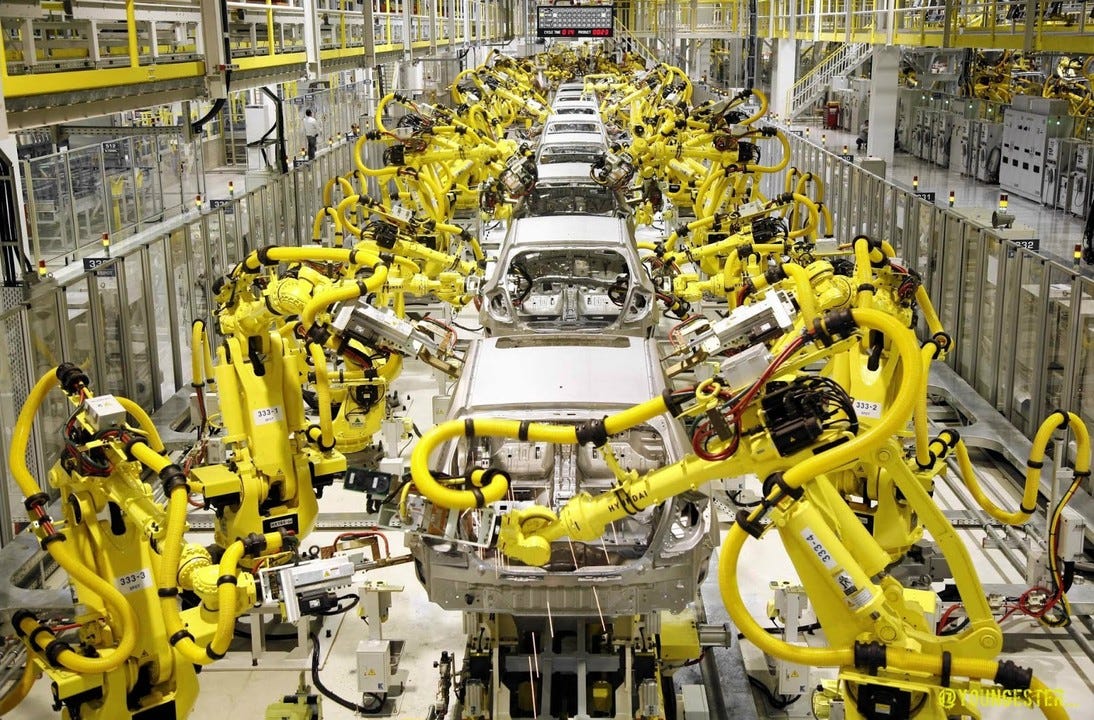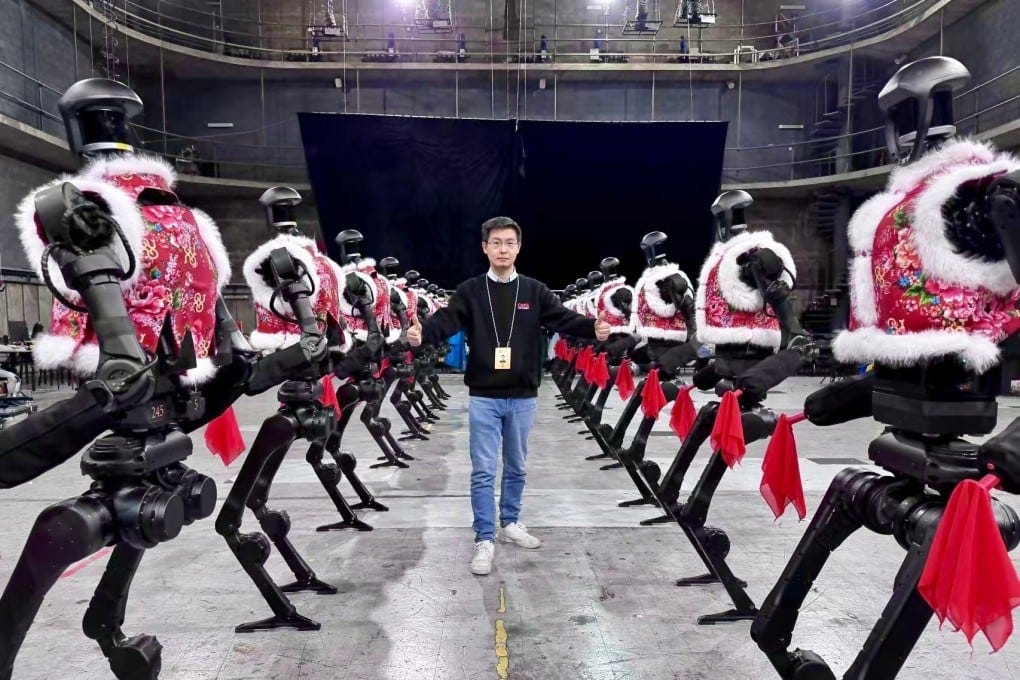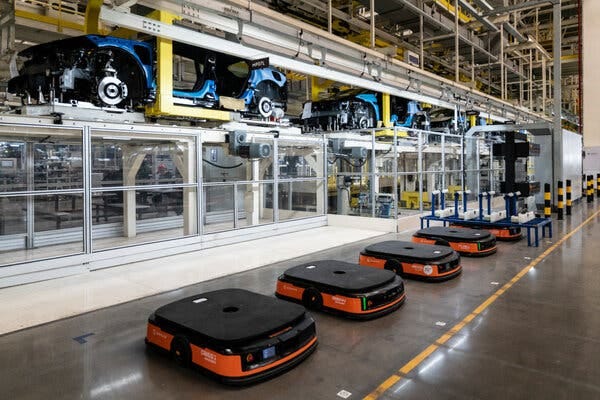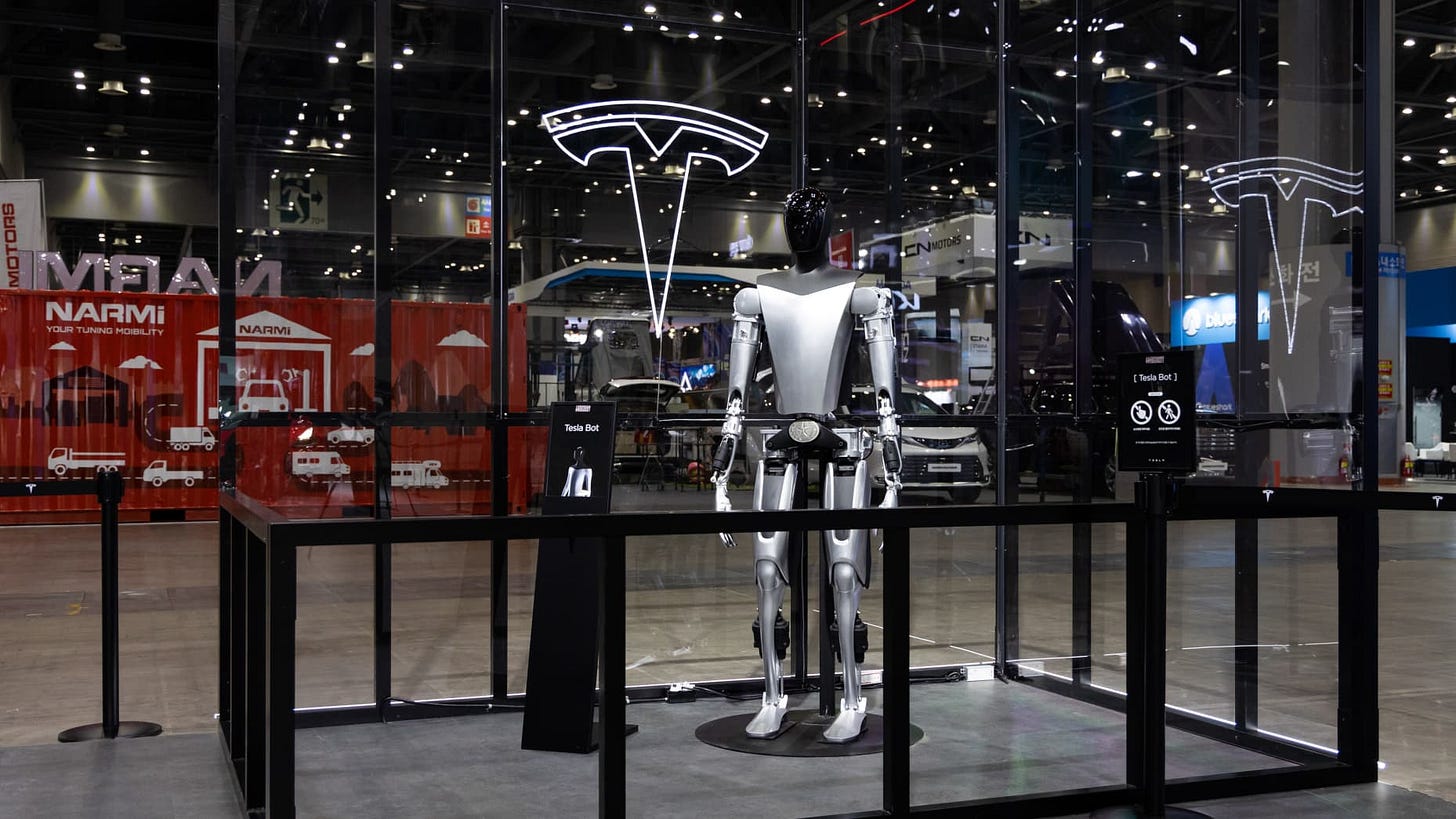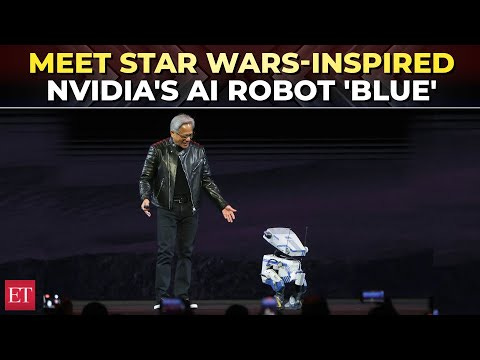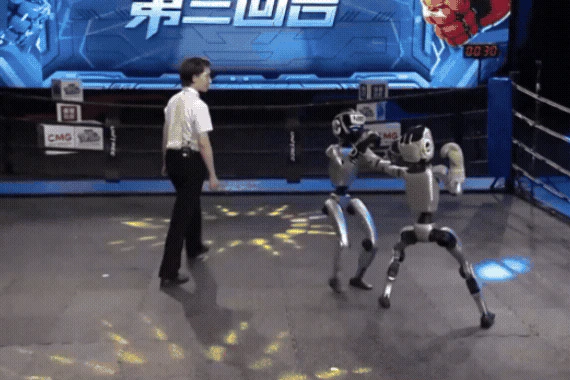
AI: China accelerates in AI Robotics. RTZ #858
The Bigger Picture, Sunday, September 28, 2025
In a Bigger Picture piece this summer, I highlighted how AI Robots, especially ‘Humanoids’ like Elon Musk’s Optimus, are at the AI self driving cars stage were in 2004, over two decades ago. And I’ve been writing about how China is meaningfully ahead of the US in ‘Foundation’ robot development and deployment. Both for business and consumer use in this AI Tech Wave.
Now it seems like both China and the US are in the AI Robotics ring. While US company and investor interest in AI driven robotics continue to ramp up, China remains in pole position. Especially with its manufacturing scale and expanding ecosystem. And that is the Bigger Picture I’d like to focus on this Sunday.
The New York Times lays this out in “There Are More Robots Working in China Than the Rest of the World Combined”:
“China has embarked on a campaign to use more robots in its factories, transforming its manufacturing industries and becoming the dominant maker.”
“China is making and installing factory robots at a far greater pace than any other country, with the United States a distant third, further strengthening China’s already dominant global role in manufacturing.”
“There were more than two million robots working in Chinese factories last year, according to a report released Thursday by the International Federation of Robotics, a nonprofit trade group for makers of industrial robots. Factories in China installed nearly 300,000 new robots last year, more than the rest of the world combined, the report found. American factories installed 34,000.”
As they say, ‘practice makes perfect’. And China’s companies are getting a lot of practice at AI robotics.
“While Chinese factories have been using more robots, they have also gotten better at making them. The government has used public capital and policy directives to spur Chinese companies to become leaders in robotics and other advanced technologies like semiconductors and artificial intelligence.”
“Worldwide, robots and artificial intelligence are playing an increasingly prominent and disruptive role in manufacturing. Factory robots range from machines that weld car parts together to claws that lifts boxes onto conveyor belts. As technology helps factories become more efficient, some are making do with fewer workers and altering the roles of others.”
And it’s again a unique China driven effort that makes top down initiatives meet in the middle with bottoms up entrepreneurship driven by highly aggressive government provinces:
“Over the past decade, China has embarked on a broad campaign to use more robots in its factories, become a major maker of robots and combine the industry with advances in artificial intelligence.”
“Chinese companies have benefited from a national push that mirrors how the country’s electric vehicle and artificial intelligence industries have grown, said Lian Jye Su, a chief analyst at Omdia, a tech research firm.”
“This is not a coincidence,” Mr. Su said. “It has taken many years of investment by Chinese companies.”
This drive has been a key component of China’s manufacturing ramp across a whole host of industries this past decade.
“China’s drive for factory automation has been a key part of achieving its position as the world’s manufacturing powerhouse. Factories in China have installed more than 150,000 robots each year since 2017. At the same time, manufacturing output ballooned. By the start of this year, factories in China were making nearly a third of all manufactured goods worldwide, more than the United States, Germany, Japan, South Korea and Britain combined.”
“Robot installations fell last year, compared with the year before, in all four of the next largest factory robot-using countries: Japan, the United States, South Korea and Germany. Japan installed 44,000.”
“In 2015, Beijing made it a top priority for China to become globally competitive in robotics as part of its Made in China 2025 campaign to import fewer advanced manufactured goods.”
Again, the mechanics were driven from the top and bottom:
“Industries received almost unlimited access to loans from state-controlled banks at low interest rates as well as help in buying foreign competitors, direct infusions of government money and other assistance. And in 2021, the government issued a detailed national strategy for expanded deployment of robots.”
“You can see how well that strategy worked out; without a strategy, a country is always at a disadvantage,” said Susanne Bieller, the general secretary of the robotics federation.”
“China’s share of the world’s robot manufacturing rose last year to a third of the global supply, up from a quarter in 2023, according to the federation. Japan, the previous leader, dropped to 29 percent of the world market from 38 percent the year before.”
“Until last year, China installed more imported robots in its factories than domestically made ones. But last year, nearly three-fifths of the robots installed in China were also made in the country.”
“Overall, China has five times as many robots working in its factories as the United States.”
All of the above does not include AI ‘humanoid robots’, which is the current rage amongst corporate and venture investors in the US. Especially Elon Musk with Optimus at Tesla.
“The federation’s data does not include humanoid robots, the two-legged machines that remain largely in experimental stages. But the government support has led to a boom in start-ups making humanoid robots and an ecosystem of companies that make specialized components for robots, such as motorized joints.”
“The humanoid robot start-up Unitree Robotics, based in the tech hot spot of Hangzhou, said earlier this month that it planned to go public by the end of the year. Unitree’s latest basic humanoid robots are priced at about $6,000 in China, a fraction of the price of robots made by the robot maker Boston Dynamics, a leading American player in the industry.”
Boston Dynamics, which was owned by Google, is now owned by Hyundai of South Korea.
The whole piece is worth a full read for additional details and nuance.
And while China is ahead on a number of fronts in AI Robotics, US companies of course are also in the race.Meta’s interest in ‘Metabots’ continues as well for a while now, as do most of the ‘Mag 7’, like Amazon, Google, Nvidia, and companies like OpenAI. Nvidia in particular is also focused on training data for AI Robotics, a uniquely key area.
And of course Elon Musk is in the race with his Optimus robots, and characteristically ambitious enthusiasm.
But the Bigger Picture in this AI Tech Wave remains that China is the one in a relative pole position in AI robots, both industrial and soon consumer. With the US and rest of the world also ramping up to get in the ring. Stay tuned.
(NOTE: The discussions here are for information purposes only, and not meant as investment advice at any time. Thanks for joining us here)

